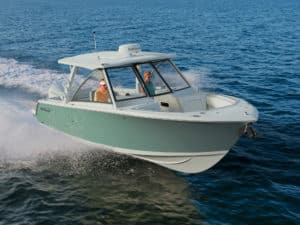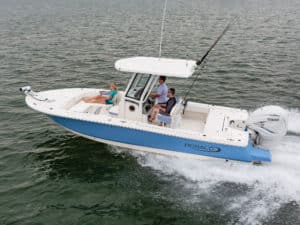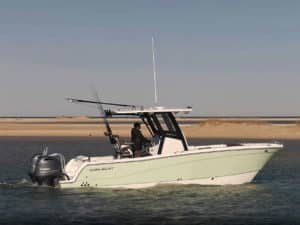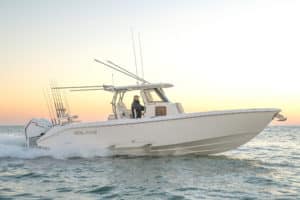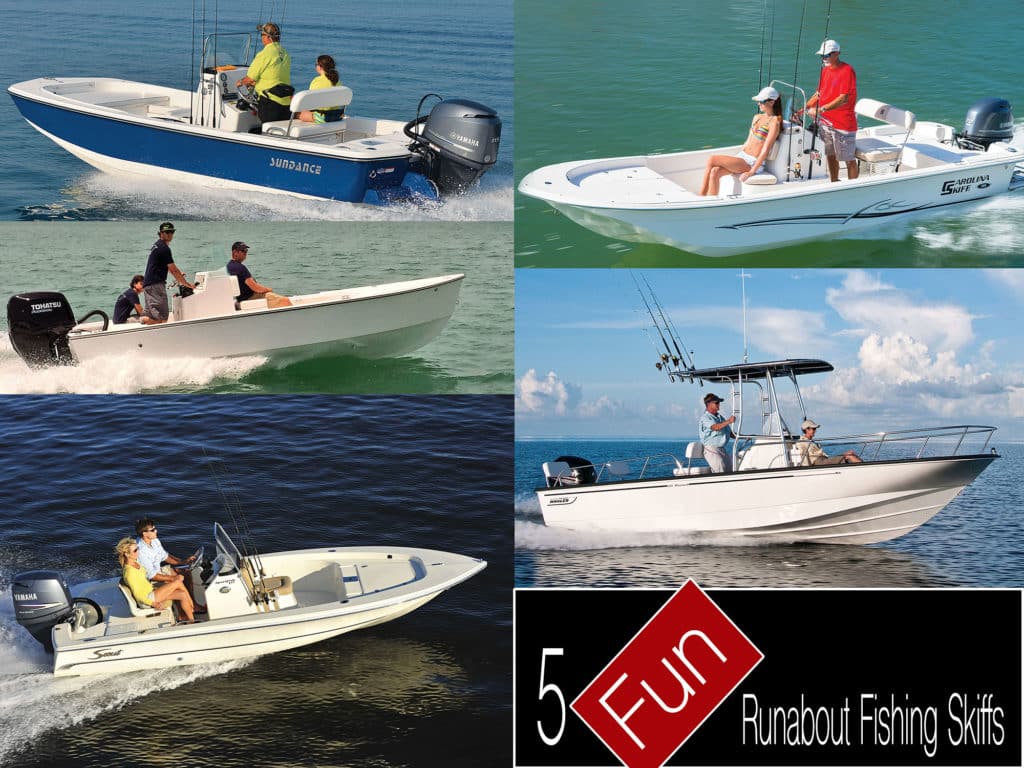
Before superlight pole-or-troll flats boats brought anglers to shallow waters for spooky bonefish and permit, the word “skiff” generally described a flat-bottom, rolled-edge workhorse used for all kinds of fishing. What you might have given up in ride, you made up for with value, stability and durability.
Today, fewer builders make those more generic utility boats in the 16- to 21-foot range. But you can still find some old favorites, upgraded with finer finishes and a few new options, with flat to modified-V bottoms. Some focus on shallow fishing and backcountry recreation; others offer families a wide range of possible uses, from pleasure boating to watersports. For lack of a better name, we’re calling them runabout fishing skiffs.
I asked five builders to share information on one of their runabout fishing skiffs, explain the appeal, and describe the buyer. Their summaries are below, in alphabetical order by builder.
Boston Whaler 210 Montauk
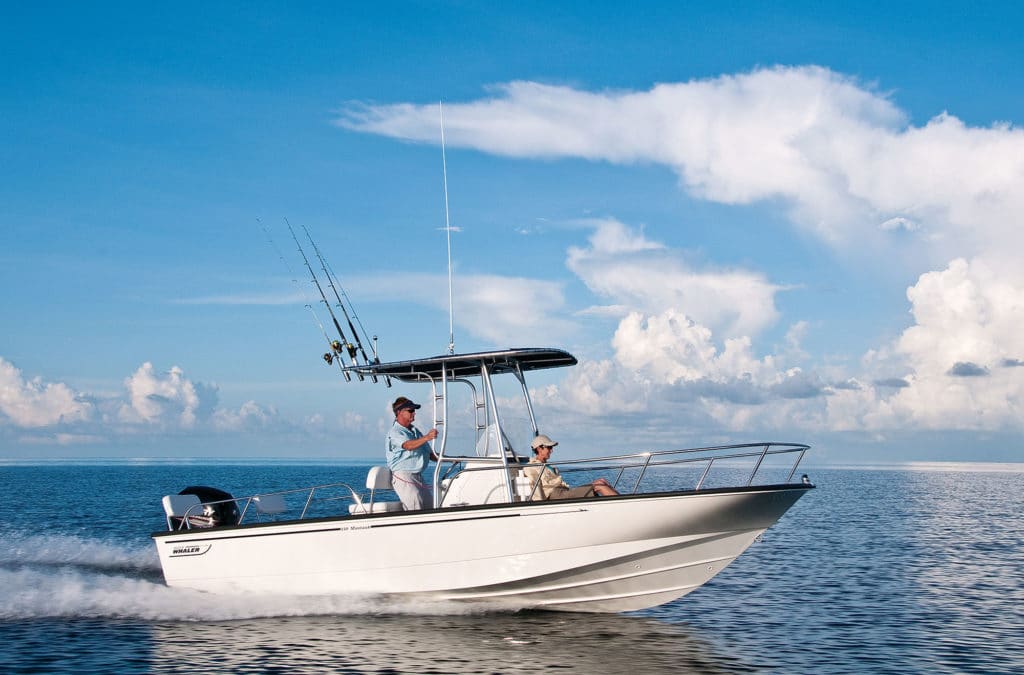
Despite the fact that Montauks carry 16 degrees of deadrise angle at the transom, this classic skiff with its squared-off bow typifies utilitarian design. While Whaler has made Montauk boats for more than 50 years, the 210 debuted in 2011 as the line’s new flagship model, outranking the 19-, 17- and 15-foot versions.
“The customer who buys this boat is someone who appreciates a high-quality product that’s also feature-rich, with a large, functional interior due to the classic bow shape,” says Traci Davis, Boston Whaler’s manager of content development and events. “What sets us apart primarily is Whaler’s renowned Unibond construction.”
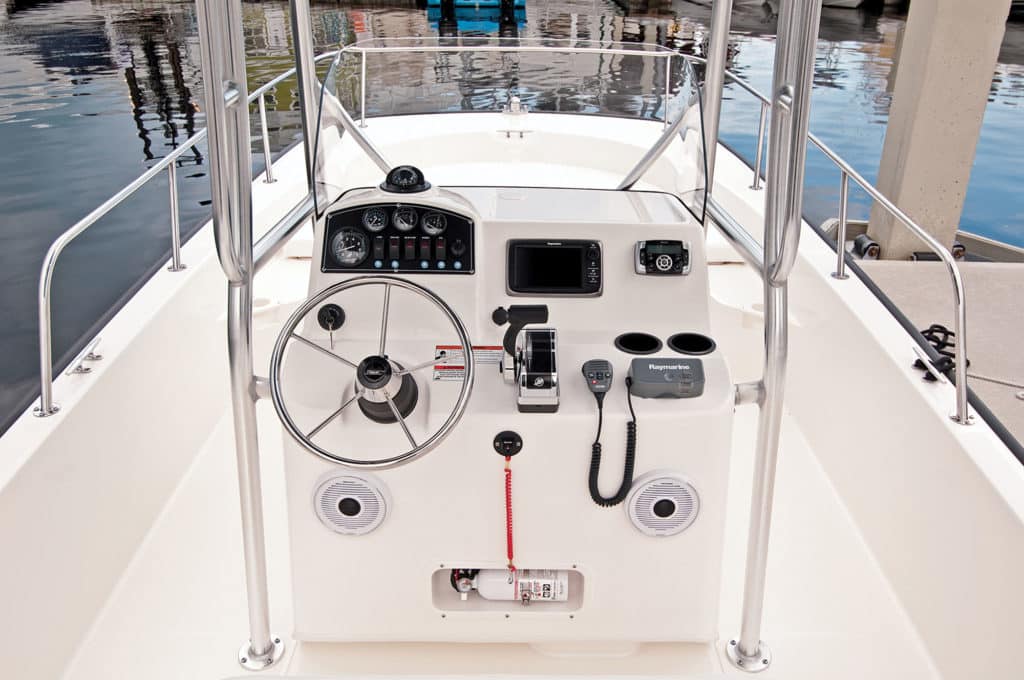
In Unibond construction, two thin, uncured, laminated shells bond together using a fiberglass weld; the space between them is filled with a liquid that expands into foam, and the hull cures into a single structure.
While flats skiffs and bay boats address more singular purposes, Montauks deliver fishing, cruising and watersports, Davis says. The expansive bow works equally well for casting anglers and relaxing sunbathers.
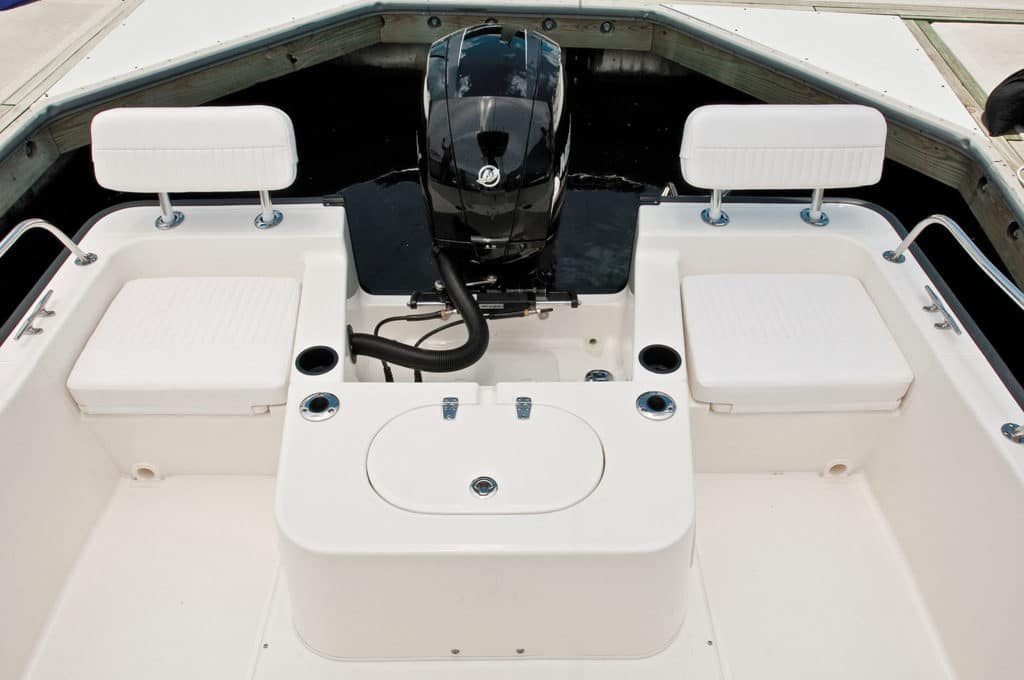
The Montauk 210 comes with rod holders and a fish box. Whaler offers a full fishing package as an option, with six console-mounted rod holders, a 94-quart cooler with backrest, two tackle drawers, an aft livewell, a pedestal fishing seat, and a trolling-motor panel with battery boxes and wiring.
SPECS: LOA: 21 ft. 4 in. • Beam: 8 ft. 6 in. • Transom Deadrise: 16 deg. • Draft: 12½ in. • Dry Weight: 2,500 lb. • Max Power: 200 hp • MSRP: $49,169 (w/ Mercury 150 XL, trailer)
Carolina Skiff 18 JVX CC
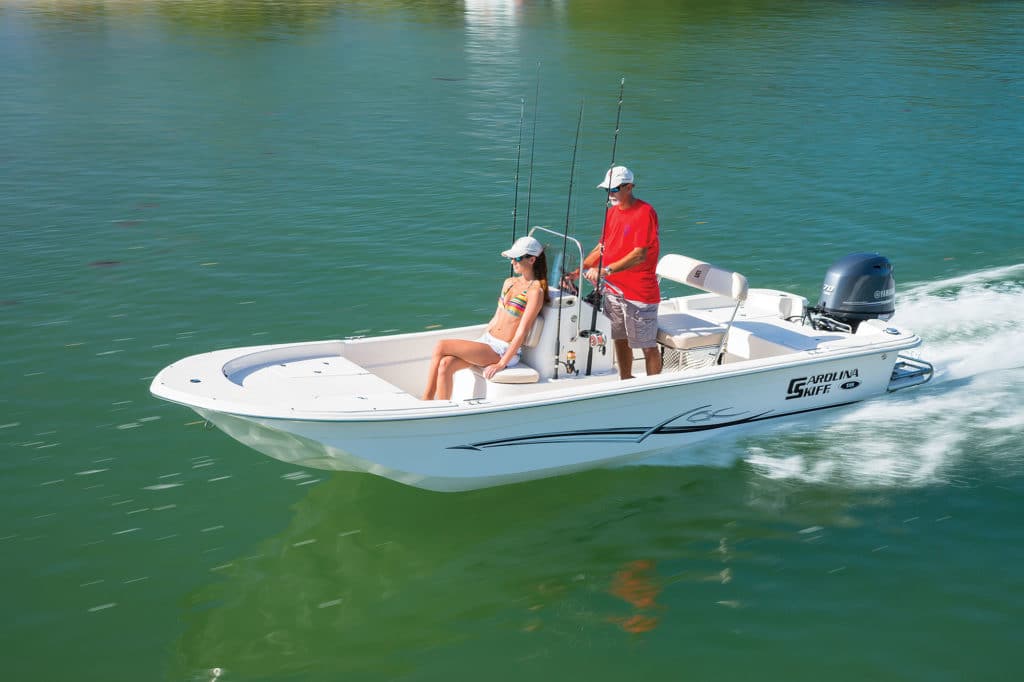
“The JVX 18 was designed for the economy-minded shallow-water angler, and to give peace of mind with an unsinkable, no-frills fishing machine,” says Robert Sass, Carolina Skiff national sales and marketing manager.
Sass says that aside from the shallow 4-inch draft and the dependable rolled-edge design, the JVX 18 offers plenty of storage and versatility to the saltwater angler. The aft deck houses a 12-gallon livewell while the foredeck is fitted with a 12-volt trolling-motor plug. The boat comes with six rod holders. An optional second livewell can be added to the console, and the trolling-motor plug can be upgraded to 24 volts.
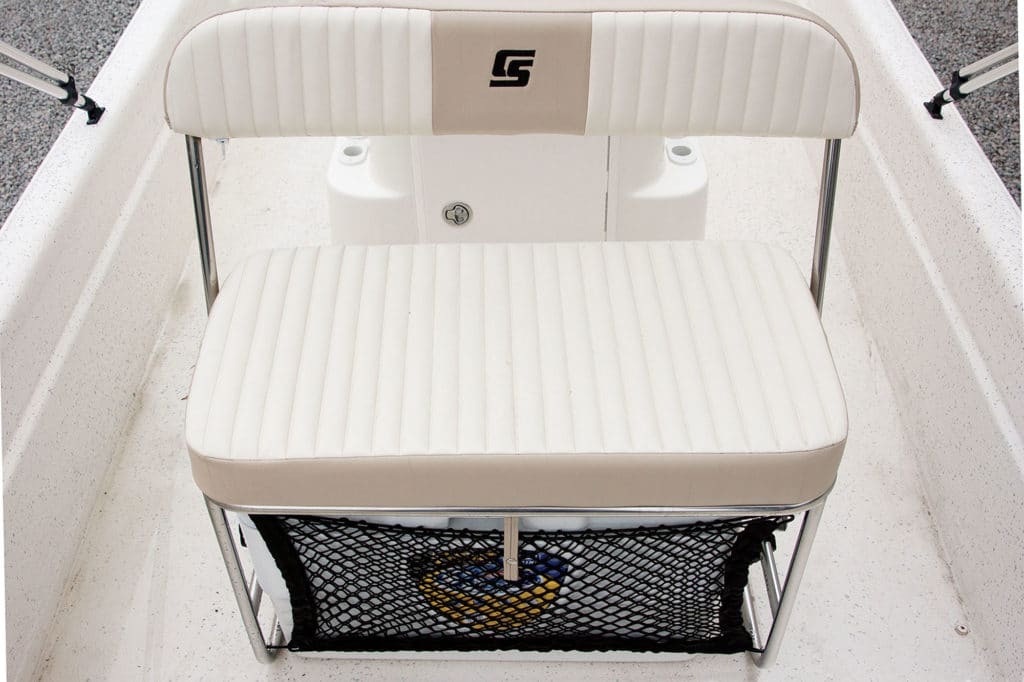
For the family, Sass says, the boat is easy to handle and maintain, safe in seas, and features a standard onboard 70-quart cooler and swim platform. Seating cushions fore and aft are optional.
Sass says this style of skiff simply offers more boating options than a flats skiff or bay boat. “Carolina Skiff has been around for more than 30 years, building skiffs,” he says. “The user or owner of a skiff is where we spend our creative energy. We listen and do what we can to make our product fishing- and family-friendly.”
SPECS: LOA: 17 ft. 9 in. • Beam: 6 ft. 6 in. • Transom Deadrise: 0 deg. • Draft: 4 in. • Dry Weight: 1,073 lb. (w/o engine) • Max Power: 70 hp • MSRP: $15,665 (base model)
Scout 177 Sportfish
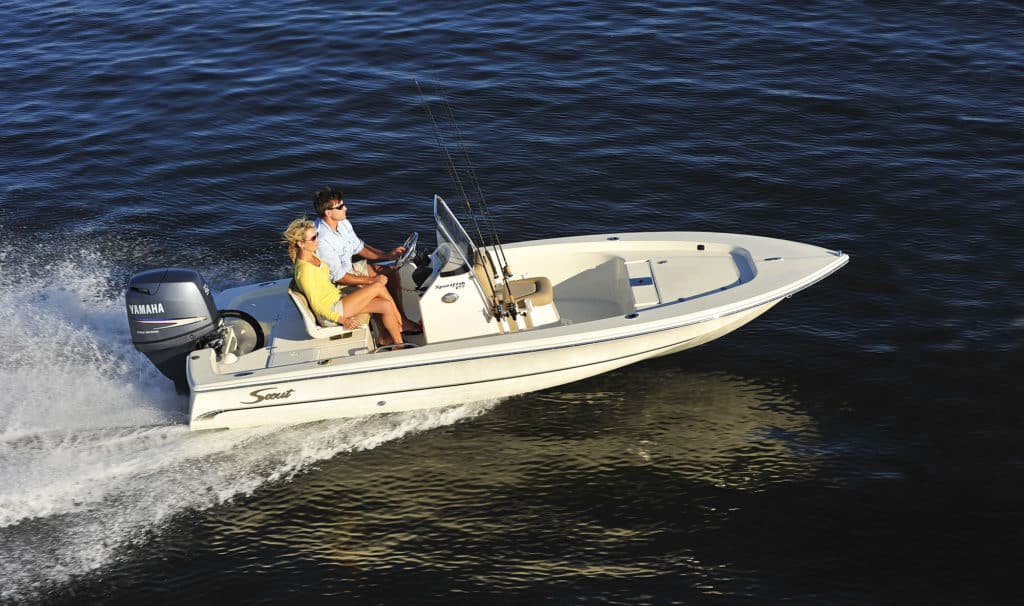
While Scout now makes premium 30- to 42-foot center-console fishing machines, Scout founder Steve Potts cut his teeth on small skiffs. The first boat he ever built measured 14 feet.
The company currently offers 17- to 25-foot skiffs and bay boats. The 177 Sportfish is one of four models that make up the company’s 17-foot skiff series. Next to the bay-boat version (Winyah), it’s the model more geared toward anglers.
“It’s a hybrid of [a flats skiff and bay boat],” says Alan Lang, Scout’s national sales manager. “You can still get into skinny water and also take it in the harbor [bay] without getting beat up. The boat has level flotation, a very sharp entry, and lots of bow flare to keep you dry, safe and comfortable.”

The 177 Sportfish was designed for shallow-water anglers who want style, fuel efficiency and speed, he says. The vessel is easy to maintain and comes with flush-mount and console rod holders and an aerated livewell. It is certified by the National Marine Manufacturers Association and rated for five passengers, and features level flotation, captain’s chairs and a swim platform.
SPECS: LOA: 17 ft. 7 in. • Beam: 7 ft. 3 in. • Transom Deadrise: 13 deg. • Draft: 8 in. • Dry Weight: 1,000 lb. (w/o engine) • Max Power: 115 hp • MSRP: $22,495 (w/ Yamaha F70LA, trailer, Just Add Water promotion)
Stoner Abaco Skiff 20
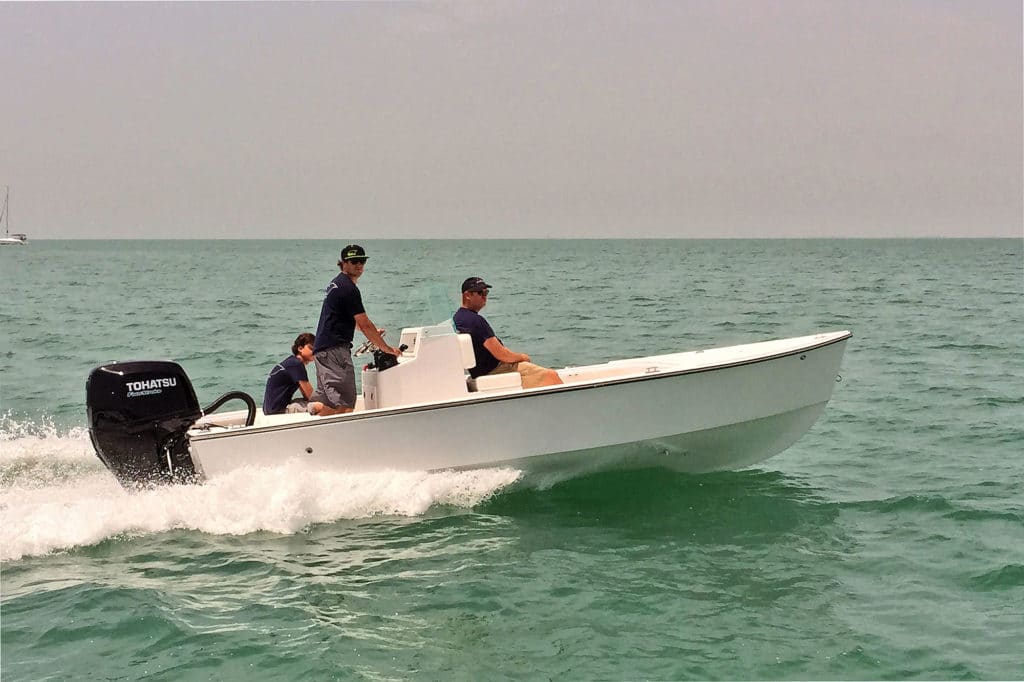
Stoner Boatworks says this skiff is an island-style boat designed for running in skinny water as well as offshore. The hull features a graduated pad that allows it to get up on plane and run with minimal power.
“The Abaco Skiff is a very strong boat for its size,” says company co-owner Josh Stoner. “The floor is laminated to the hull and up the hull sides for extra strength. This boat also holds 80 gallons of fuel, enough to run anywhere and not worry.”
Stoner says the skiff features a broad foredeck and low gunwales that make casting from the bow and releasing large fish easy. Families will appreciate the aft bench seat and expansive dry-storage hatches forward. The base model comes with a console and forward insulated-cooler seat; the center-console model comes with a leaning post, forward insulated-cooler seat and rear jump seats.
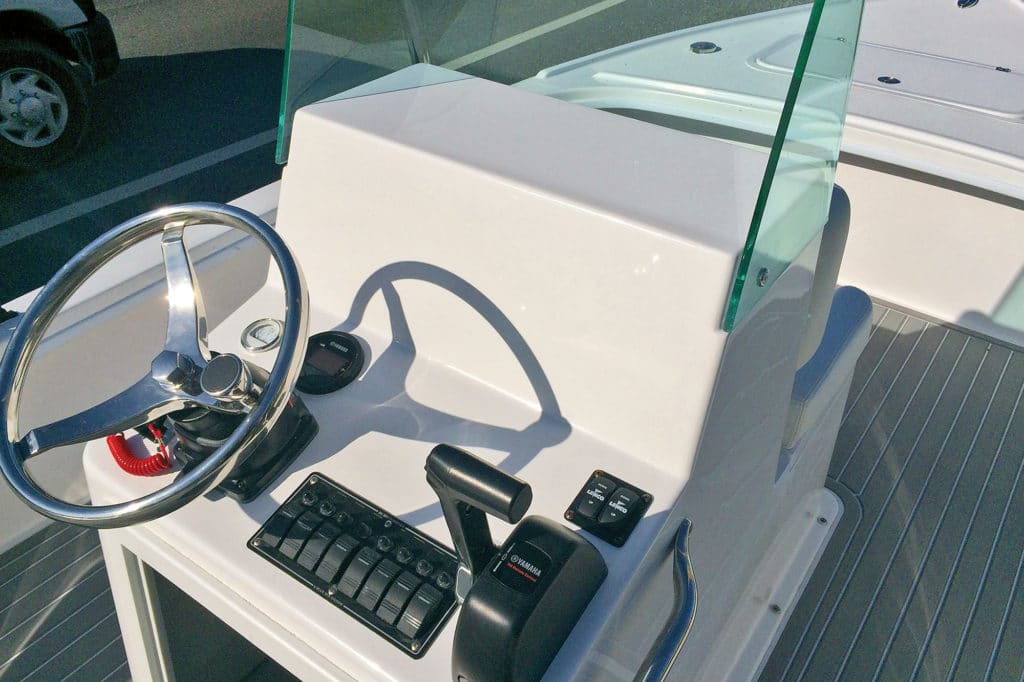
The company offers a wide range of options, ordered separately, including rod holders, various livewells with 25- to 30-gallon capacities, Bimini tops and a swim bracket.
“We build these semicustom skiffs to give buyers a choice of designing their own style and layout,” Stoner says. “Everything is doable and optional.”
SPECS: LOA: 19 ft. 4 in. • Beam: 7 ft. 2 in. • Transom Deadrise: 20 deg. • Draft: 11 in. • Dry Weight: 1,900 lb. (w/o engine) • Max Power: 200 hp • MSRP: $49,999 (base model w/ Yamaha F115)
Sundance DX20

Described as “not just a base model or fishing-only skiff,” the DX20 attracts second- or even third-time buyers who have “gained some boating experience,” says Sean McCoy, Sundance marketing director. “Specifically, they’ve learned what they want and need and are ready to upgrade to a full-liner-style skiff,” he adds.
McCoy says he’s heard Sundance skiffs referred to as sport-utility boats because they offer owners the option to fish or play in bays and inlets, while providing higher freeboard and a wider beam than flats boats for comfort and safety.
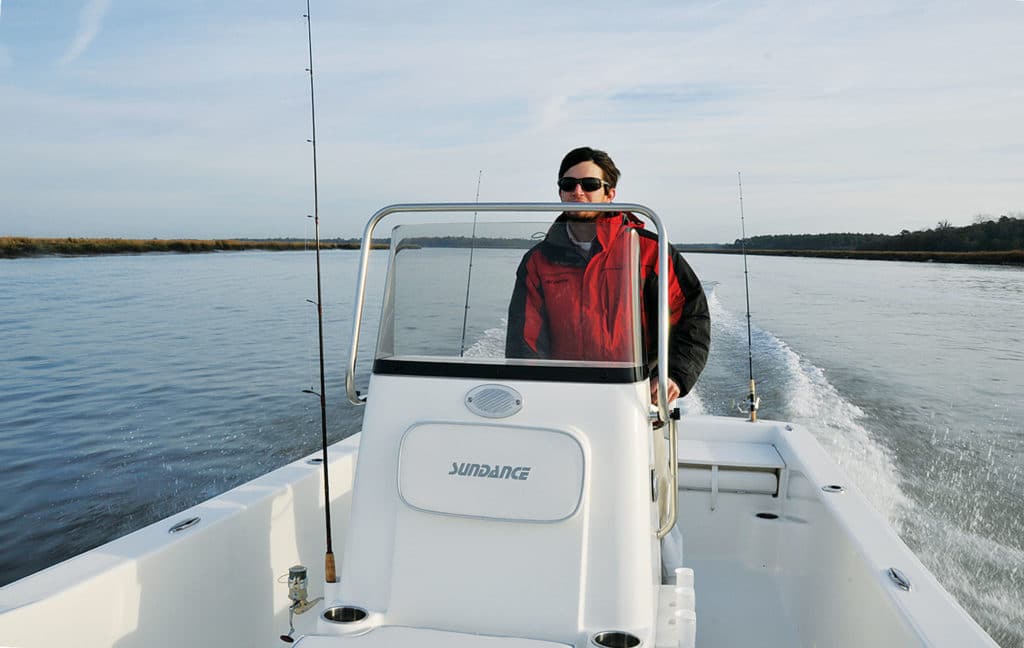
“Likewise, a bay boat is great, but it’s going to usually need a bit more water, and purely speaking on averages, they cost a bit more per foot,” he says.
Anglers tend to appreciate the DX20’s layout, with its roomy deck, multiple wells and rod holders, and easily accessible fore and aft casting platforms. Families appreciate the aft jump seats and handy cup holders. Ample freeboard means added safety for children and pets.
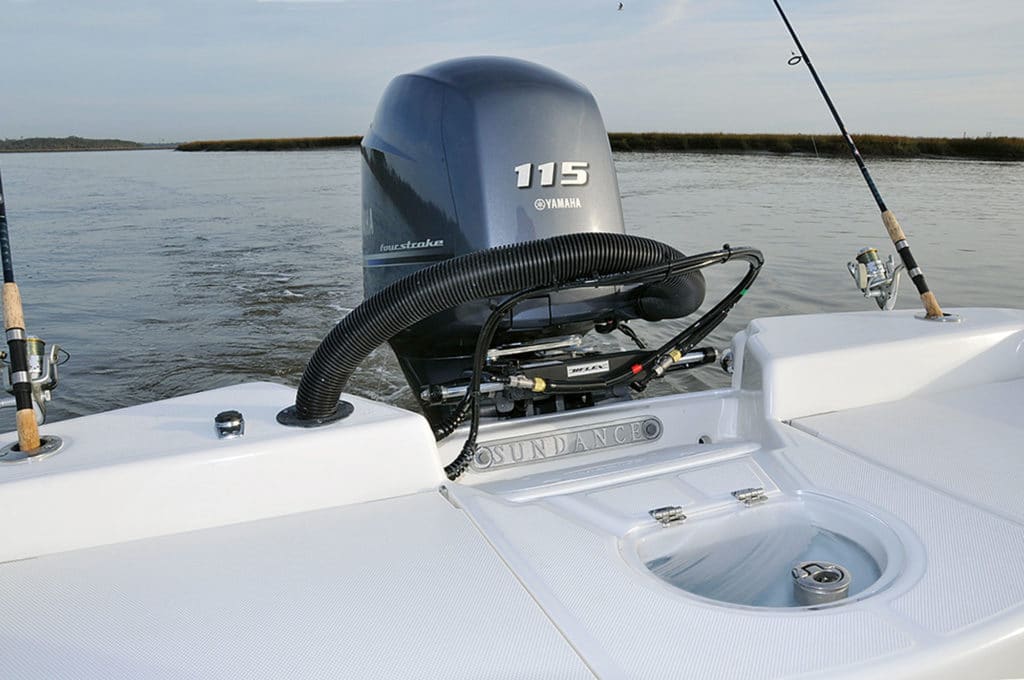
Sundance and Yamaha performance bulletins for the DX20 show that the vessel tops out at 40.5 mph with an F115, attaining 3.79 mpg. The most efficient cruise falls at 3,500 rpm and 21.8 mph for 6.41 mpg.
SPECS: LOA: 19 ft. 10 in. • Beam: 7 ft. 10 in. • Transom Deadrise: 0 deg. • Draft: 6 in. • Dry Weight: 1,575 lb. (w/o engine) • Max Power: 130 hp • MSRP: $30,527 (w/ Yamaha F115)

